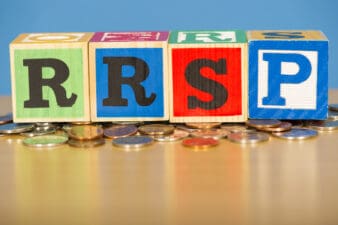Dividend investing is a great way to build a long-term passive-income stream. But dividend investing isn’t foolproof. If you want to succeed at finding profitable and reliable income stocks, there are a few things you should know. The best way to learn these lessons is from others. That way, you won’t have to experience them yourself.
If you want an edge investing in dividend stocks, avoid the three “traps” below.
Going big
Dividend investors often get sucked into “big yields” — that is, stocks that have high payouts, sometimes totaling 6% or more. Just take note — there’s no such thing as a free lunch. All too often, dividend investors trade away potential growth and stability for a juicy near-term yield. Frequently, these high-yield dividend stocks fail to deliver over the long term. Laurentian Bank is a prime example.
Laurentian Bank currently has a dividend of nearly 6%. That’s quite a bit higher than its rivals. Royal Bank of Canada has a dividend of just 4.3%. Toronto-Dominion Bank stands at just 4.1%. Here’s the problem: the high yield isn’t worth it. Over the last decade, Laurentian Bank has grown diluted EPS by just 0.8% annually. RBC and TD Bank, for comparison, grew at double-digit rates. In total, you would have made much more money by investing in the dividend with the higher long-term growth rate rather than the highest immediate yield.
Trusting management
One of the worst things a dividend investor can do is to trust management’s forecast. Most dividend stocks promise long-term payout growth. Others repeatedly tell investors that their payout is “rock solid.” Guess what? As time goes on, many of these promises are broken. That’s reality. When a once-reliable dividend is cut, stock prices are known to fall by 20% or more in a single day.
It’s critical that you do your own research. Want proof? Read up on Crescent Point Energy. The stock used to have a dividend yield between 10% and 20%! Countless income investors were sucked into buying, especially since management remained committed to the payout. You can probably guess what happened. The stock price fell by more than 90% over the next five years.
Be sure to form your own opinion about a dividend’s sustainability.
Investing in dividends
The biggest mistake dividend investors make is to focus solely on dividend stocks. There’s no doubt that dividends have a role to play, but there are many other ways to make a profit. Consider Berkshire Hathaway. This is one of the best-performing stocks of all time, yet it’s only paid one dividend in its entire history, back in 1967. Buffett has since joked that he must have been in the bathroom when the payment was executed.
Why doesn’t Berkshire pay a dividend? Because it can earn more money for shareholders by reinvesting the funds to fuel growth. If a company can earn a better return on capital by keeping it, by all means, it shouldn’t pay a dividend. Buffett suggests building your own income stream by gradually selling stock. That way, the company has the flexibility to put the potential dividends to better use, and you regain complete control as to when you receive your “dividends.”
At the end of the day, buying cheap stocks is the key to outperformance, not dividends.







